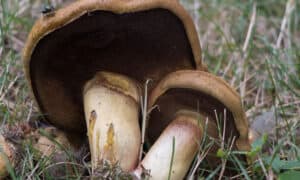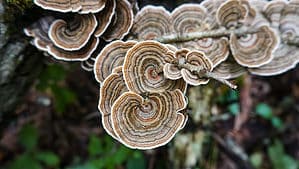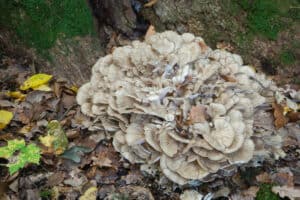There are over 200 varieties of boletes mushrooms, with at least 300 species in existence. The mushroom has many lookalikes, and with that many species in one family, it can be hard to identify which ones are safe and which ones are not. So, it’s important to know what you’re doing before you go forage for these fungi in the wild.
Let’s take a look at the benefits, types, and more, exploring boletes.
Bolete Mushroom Classification
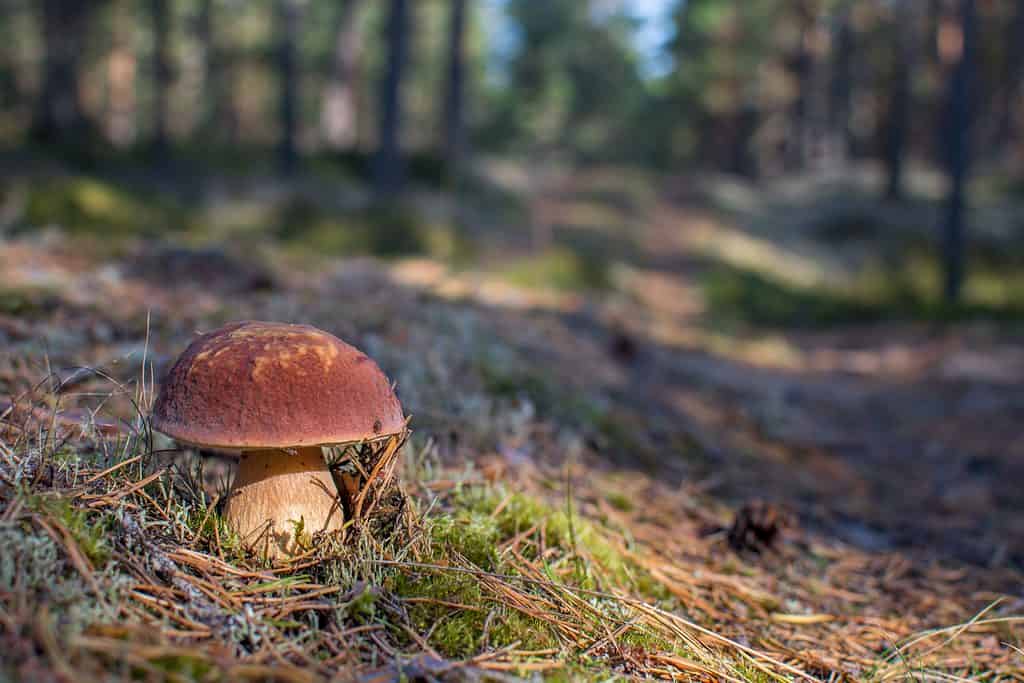
Boletes grow in pine forests very happily.
©Edgars Butans/Shutterstock.com
Boletes are the common name for the genus Boletus in the fungi family. There are more than 300 species, with at least 200 varieties that have been identified. The genus was originally defined by famous mycologist Carl Linnaeus in 1753, into the group that generically meant the mushrooms do not have gills, but rather spores. Since that time, a more complex process of identification has moved the fungi into a genus of their own. Most boletes are ectomycorrhizal fungi, which means they have a symbiotic relationship with the trees and plants around which they grow. They help each other with nutrients.
The name for the genus comes from the Greek and means “lump” or “clod.”
How Many Types of Bolete Mushrooms Are There?
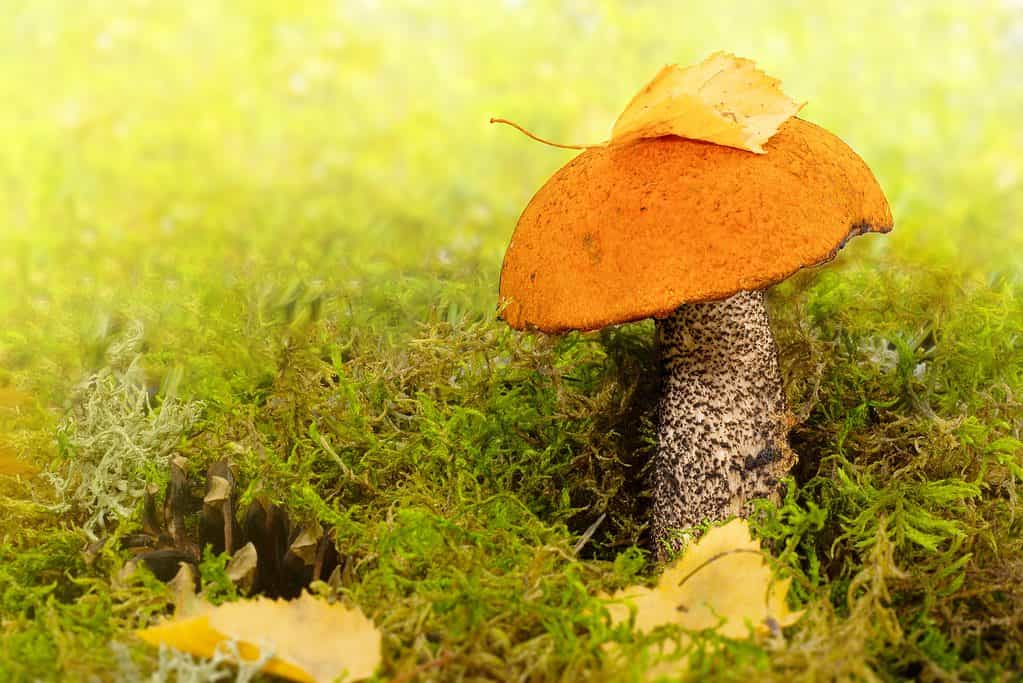
Birch bolete mushrooms are also known as the rough stemmed mushroom.
©Al.geba/Shutterstock.com
There are many, many types of bolete mushrooms, some of which are edible and some which are not. The most common species you’ll find as you forage and explore the wild include the following.
Edible Boletes
- Boletus aerus – found in Spain
- Boletus badius – found in temperate regions in Europe and North America
- Boletus dupainii – found in Europe, rarely in North America
- Boletus edulis – also known as King Bolete – found in Europe and North America
- Boletus erythropus var. erythropus – found in northern Europe
- Boletus pinophilus – found in Spain
- Boletus appendiculatus – found in Europe, rarely in Britain
- Boletus fechtneri – found in Europe
- Boletus fragrans – found in the Iberian Peninsula
- Boletus impolitus – found in the Mediterranean
Where Do Bolete Mushrooms Grow?
Bolete mushrooms are most likely to be found in woodlands, near their margins and edges, typically under hardwood trees and conifers. They particularly love oak, birch, aspen, Sitka spruce, pine, and western hemlock trees.
Are Bolete Mushrooms Safe to Eat?
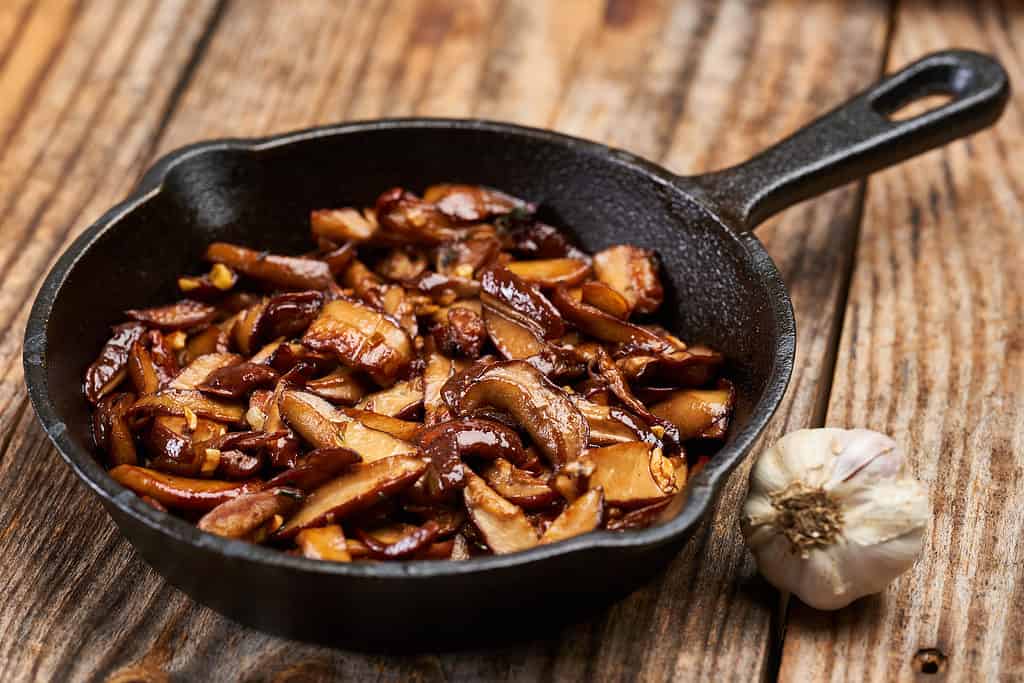
Boletes are good for sauteeing with herbs and garlic.
©Slatan/Shutterstock.com
With some 300+ mushroom species in the boletes family, there are many edible mushrooms. There are also many toxic mushrooms that can cause symptoms ranging from stomachache to severe illness, but none are known to be deadly to adult humans. The toxic ones may be deadly for children and animals, though, so it’s important to know for sure what species you have.
The boletes with red pores are most likely toxic, so avoid these. And always only try a very small portion of the mushrooms before eating a full serving to ensure you aren’t going to get ill.
What Do Bolete Mushrooms Taste Like?
The most popular edible bolete mushroom is the King Bolete, so we’ll focus on that one, as there are far too many species to describe. The King bolete has a rich, earthy flavor that’s complex and nutty. Its flavor is rich and the texture is meaty.
Health Benefits of Bolete Mushrooms
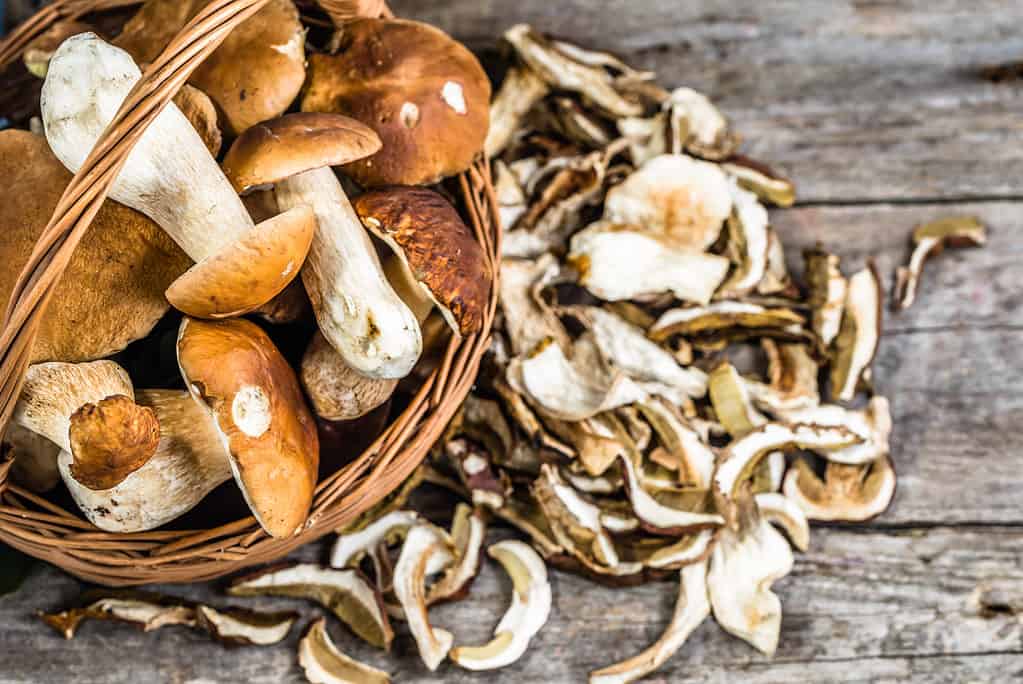
Boletes have many nutrients that help boost your health.
©alicja neumiler/Shutterstock.com
King bolete mushrooms are a great source of protein, iron, and dietary fiber. It also contains B complex vitamins, selenium, manganese, and zinc, among other healthy nutrients that may help boost your health and your mood.
There is research being conducted into the long-term effects of the mushroom and the overall health benefits. In the meantime, there are plenty of claims that mushrooms help kill colon cancer cells without killing healthy colon cells, help reduce inflammation, and treat asthma. There are no known studies that have proven any of these, however, and the ideas are just hearsay at this point.
How Are Bolete Mushrooms Used?
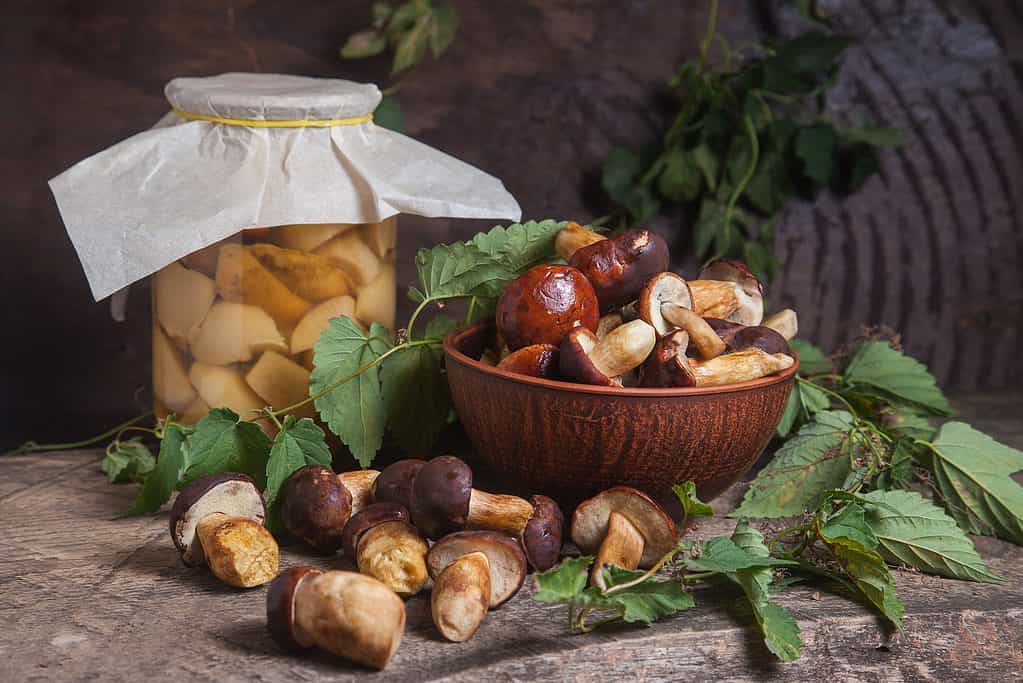
Bolete mushrooms are used in many dishes.
©Kostiantyn Kravchenko/Shutterstock.com
Bolete mushrooms, particularly King boletes, are often dried and reconstituted for meal preparations. The mushrooms have been popular in culinary uses for centuries. The fresh boletes are favored, of course, and often fried in oil or butter with herbs and spices for a fresh sauté dish or side. They may be served with brown sauces, paired with steak or broiled chicken or fish, added into rice bowls, baked, or added to mashed potatoes. They are often battered in eggs and bread crumbs and deep-fried.
How Much Do Bolete Mushrooms Cost?
Boletes are not the cheapest mushrooms on the market (look for cremini for that!), but they’re not the most expensive, either. You’ll often find them for around $4 an ounce, which makes them hefty but not impossible for many people.
Where to Forage for Bolete Mushrooms?
If you’re ready to do some foraging yourself to find boletes, you’ll want to keep a few things in mind.
Best Times to Forage
First, it’s important to note when boletes are out and where the mushrooms are likely to be hiding. Do a search for your local area to find the best times for your zone. Typically they will be found in autumn, post-summer rains.
Best Places to Find Boletes
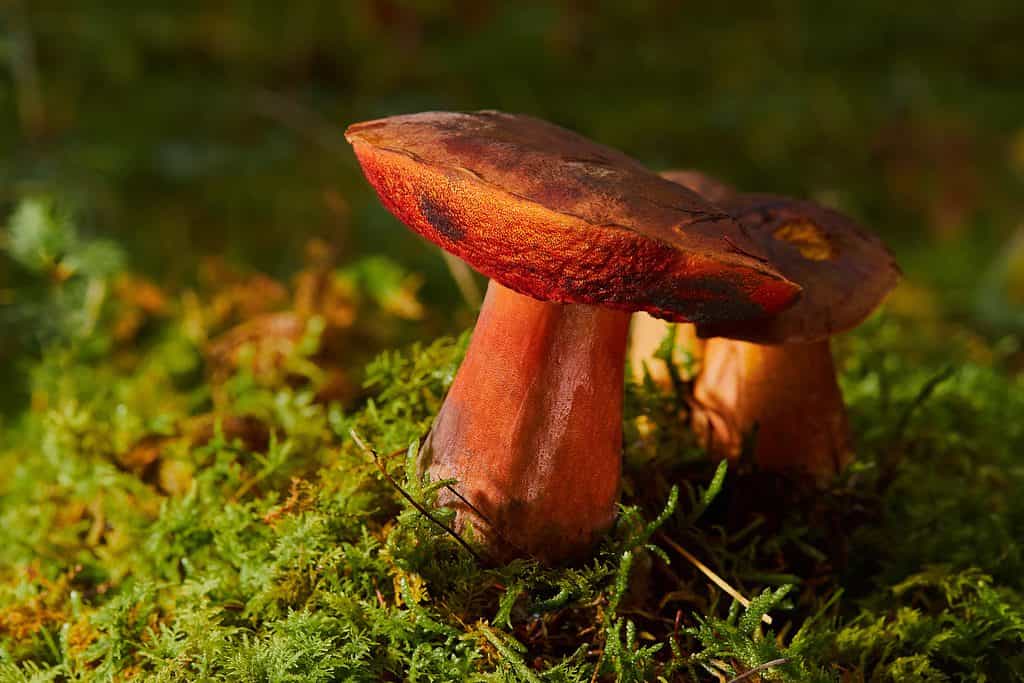
They tend to grow in mossy areas.
©krolya25/Shutterstock.com
For location, look for boletes under oak and hemlock trees in particular, among sphagnum moss. They also love spruce trees and may be found in lawns and grasses beneath other conifer trees. Many forests have plenty of mushrooms, but finding the right species could be the tricky part.
Know How to Identify the Edible Species
Because there are literally hundreds of bolete species you could make your way through in the forests, it’s important to know how to identify them (see below). It’s a good idea to use an identification app or bring along a mycologist as you first get started. There are also likely to be some foraging and mycology clubs or societies near you that may hold events and tours through which you can learn more.
How to Identify Bolete Mushrooms
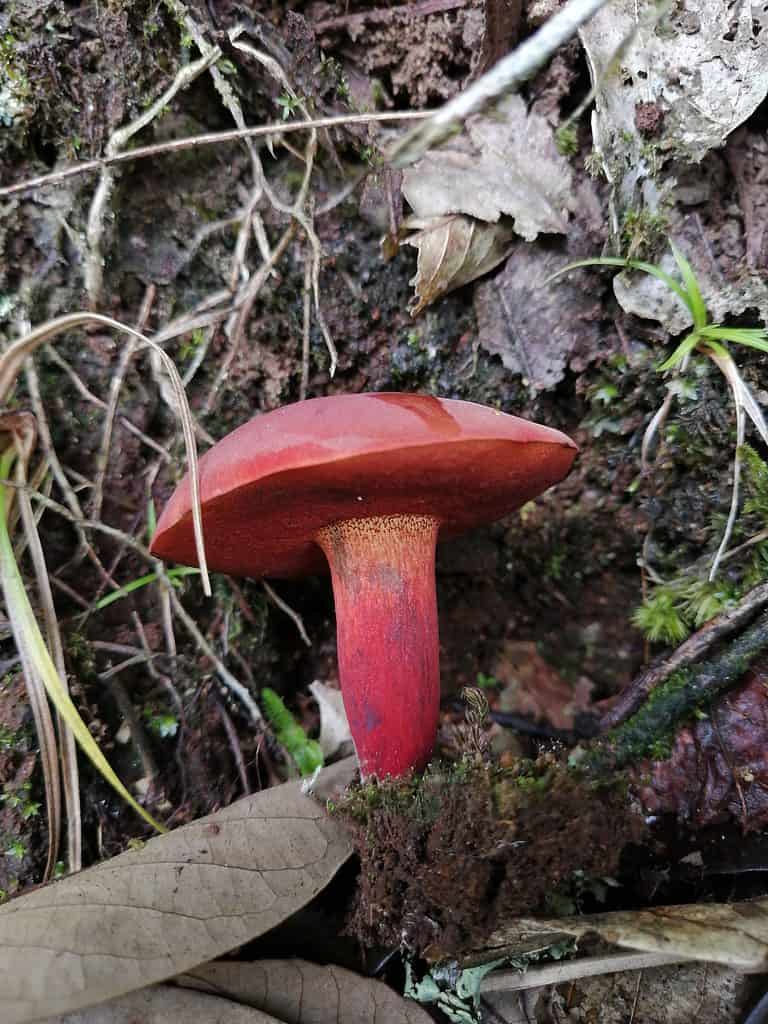
They come in many colors, so it may be hard to identify them without some study.
©Neng etta/Shutterstock.com
Identifying boletes is an important aspect of your foraging. The wrong species can make you pretty ill and could turn you off the interest.
The mushrooms will typically have a large, thick cap that is curved when young or flat-topped when mature. The coloration will be light to reddish brown, with white flesh that doesn’t stain. The texture is dense but becomes spongier and soft as it ages. The stem is wider near the bottom, very thick, and whitish to reddish brown in color. They will have raised, netlike color patterns near the top. Since there are so many species, having some visuals will help. Try a great photo gallery of many boletes species for easier identification.
Other Tips for Identification
- If there is any red coloration on the stem, cap, or pores, avoid the mushroom. It is likely toxic and will make you ill.
- Slice the bolete in half vertically and see if the flesh turns blueish. If it does, discard and avoid it!
- The pores of toxic boletes are discolored to green or blue, so if you see any of these, stay away from them as well.
Bolete Mushroom Trivia
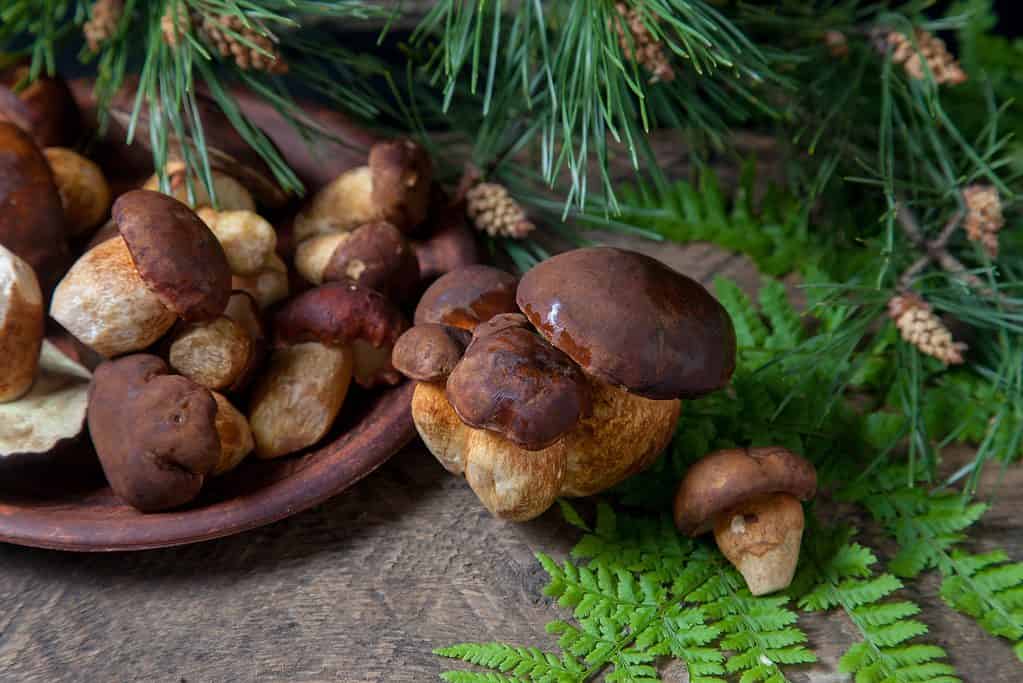
Fresh bolete
©Kostiantyn Kravchenko/Shutterstock.com
Boletes are interesting mushrooms with some intriguing qualities to them. First off, they don’t have any gills. Instead, they have pores under their caps, which often indicate their edibility (or lack thereof) by their color. Bright pores – run!
There are numerous species of both edible and inedible boletes in North America. Many of them are bitter, though, so the genus as a whole doesn’t always “read well” to some audiences. Generally, if they taste bitter, it’s better to stay away from them anyway, as they may make you sick. The mushrooms are also around year-round, but they don’t last long. Their best season is autumn.
You can actually boletes in grocery stores and farmer’s markets at certain times of the year, as well, usually in summer and autumn. They’ll often be vacuum packed and sold in other seasons, though, but their flavor isn’t as high quality as this.
Are Bolete Mushroom Stalks Edible?
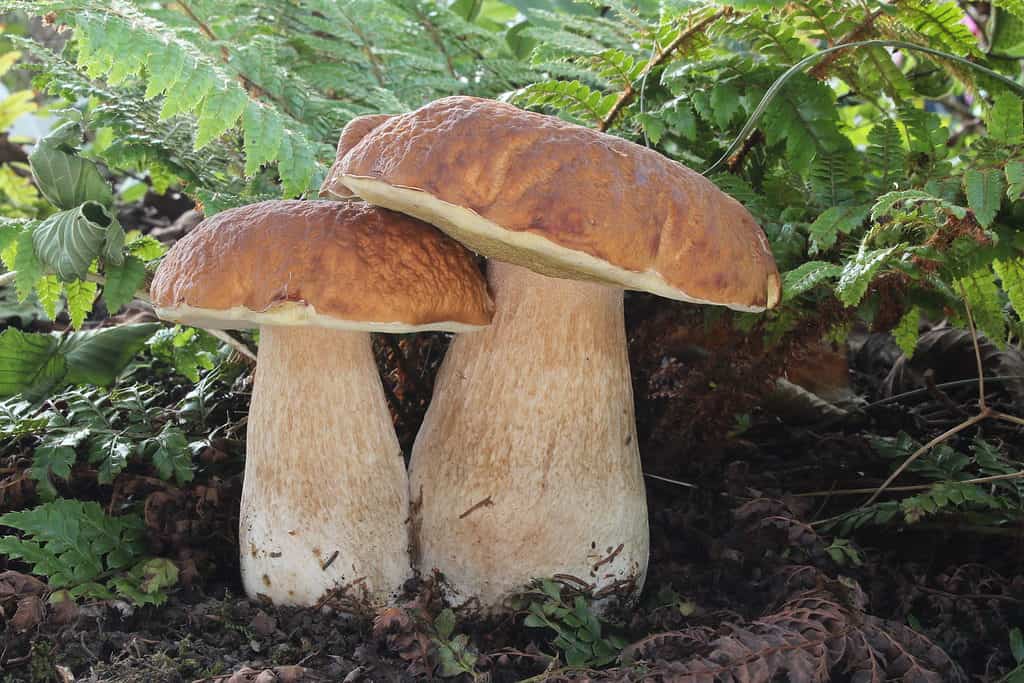
Bolete mushrooms (
Boletus edulis) are delicious to consume but the stalks on older specimens may not be as good.
©Holger Krisp, CC BY 3.0 <https://creativecommons.org/licenses/by/3.0>, via Wikimedia Commons – License
Bolete mushrooms have a meaty and earthy flavor and belong to the same family as the popular porcini mushroom but while their caps are delicious to all mushroom aficionados, you may want to discard the stem. These fungi need to be consumed fairly quickly as they are susceptible to rot. The stems on older mushrooms may be hard and fibrous, as well as a hideaway for insects, and aren’t particularly tasty.
In addition to the stems, you should discard any wet or mushy undersides, portions that have dark spots and slimy areas, and if the pores are green and soggy. These portions are not only difficult to cook but they are not very tasty. As always, consult a professional before you consume any unknown types of mushrooms or ones that you may have foraged yourself.
The photo featured at the top of this post is © Edgars Butans/Shutterstock.com
The information presented on or through the Website is made available solely for general informational purposes. We do not warrant the accuracy, completeness, or usefulness of this information. Any reliance you place on such information is strictly at your own risk. We disclaim all liability and responsibility arising from any reliance placed on such materials by you or any other visitor to the Website, or by anyone who may be informed of any of its contents. None of the statements or claims on the Website should be taken as medical advice, health advice, or as confirmation that a plant, fungus, or other item is safe for consumption or will provide any health benefits. Anyone considering the health benefits of particular plant, fungus, or other item should first consult with a doctor or other medical professional. The statements made within this Website have not been evaluated by the Food and Drug Administration. These statements are not intended to diagnose, treat, cure or prevent any disease.
Sources
- The Travel Bug Bite, Available here: https://thetravelbugbite.com/2020/07/25/bolete-mushrooms/
- Healing Mushrooms, Available here: https://healing-mushrooms.net/Boletus-edulis
- Gardening On, Available here: https://www.jardineriaon.com/en/boletus-comestibles-no-comestibles.html
- First Nature, Available here: https://www.first-nature.com/fungi/~boletales.php
- Edible Wildfood, Available here: https://www.ediblewildfood.com/blog/2017/08/how-to-identify-boletes/
- Wikipedia, Available here: https://en.wikipedia.org/wiki/Boletus
Thank you for reading! Have some feedback for us? Contact the AZ Animals editorial team.



